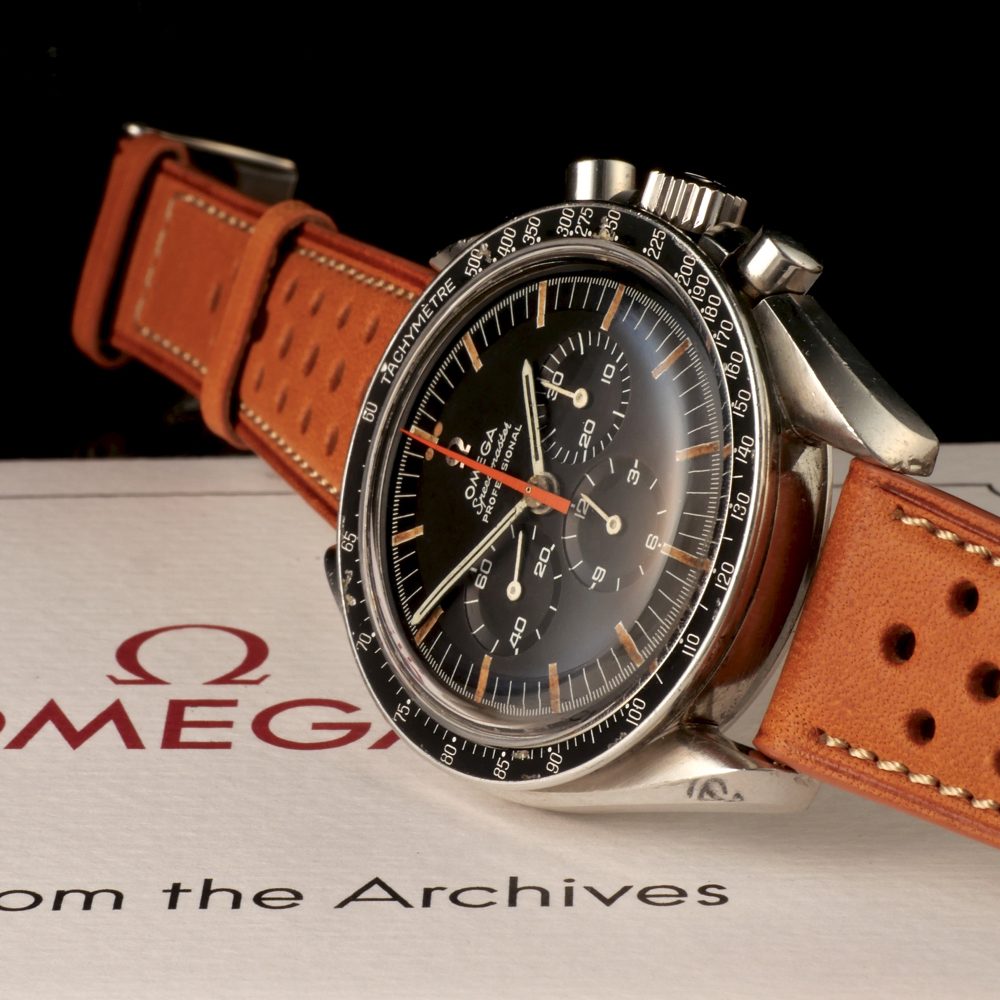
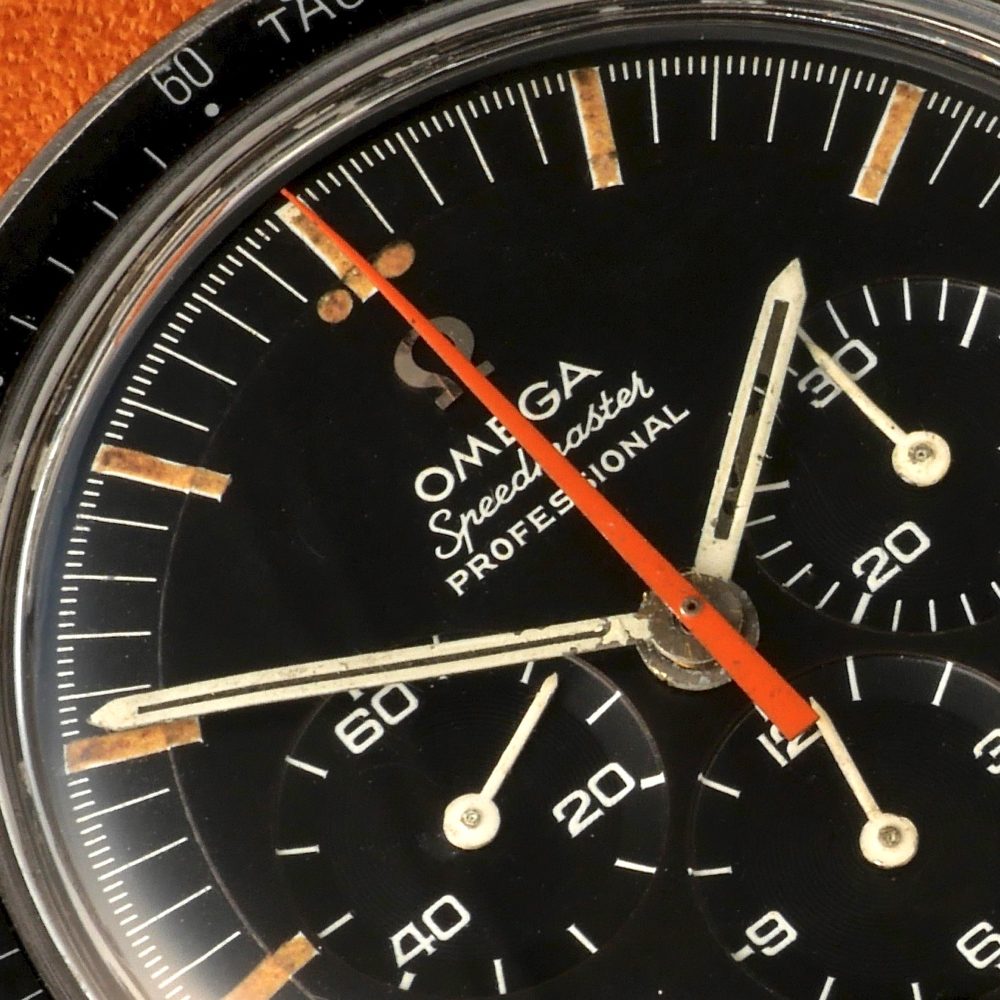
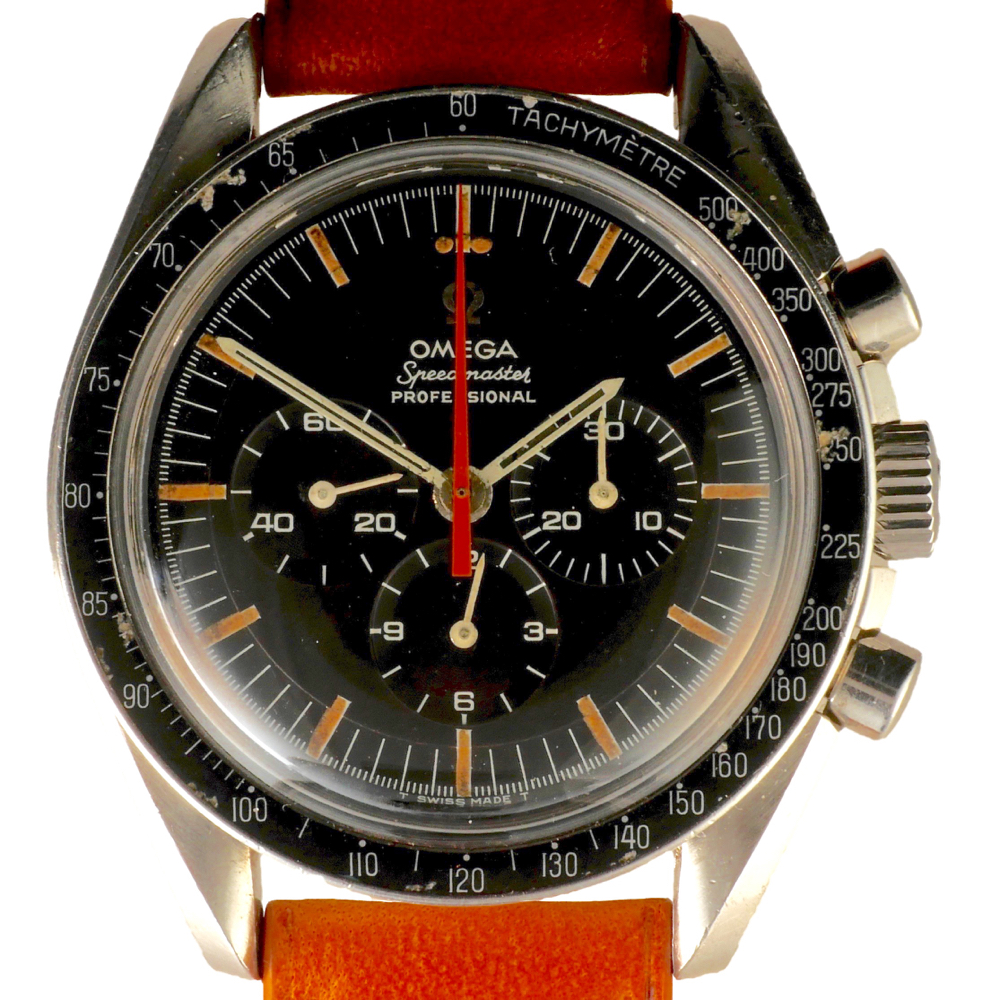
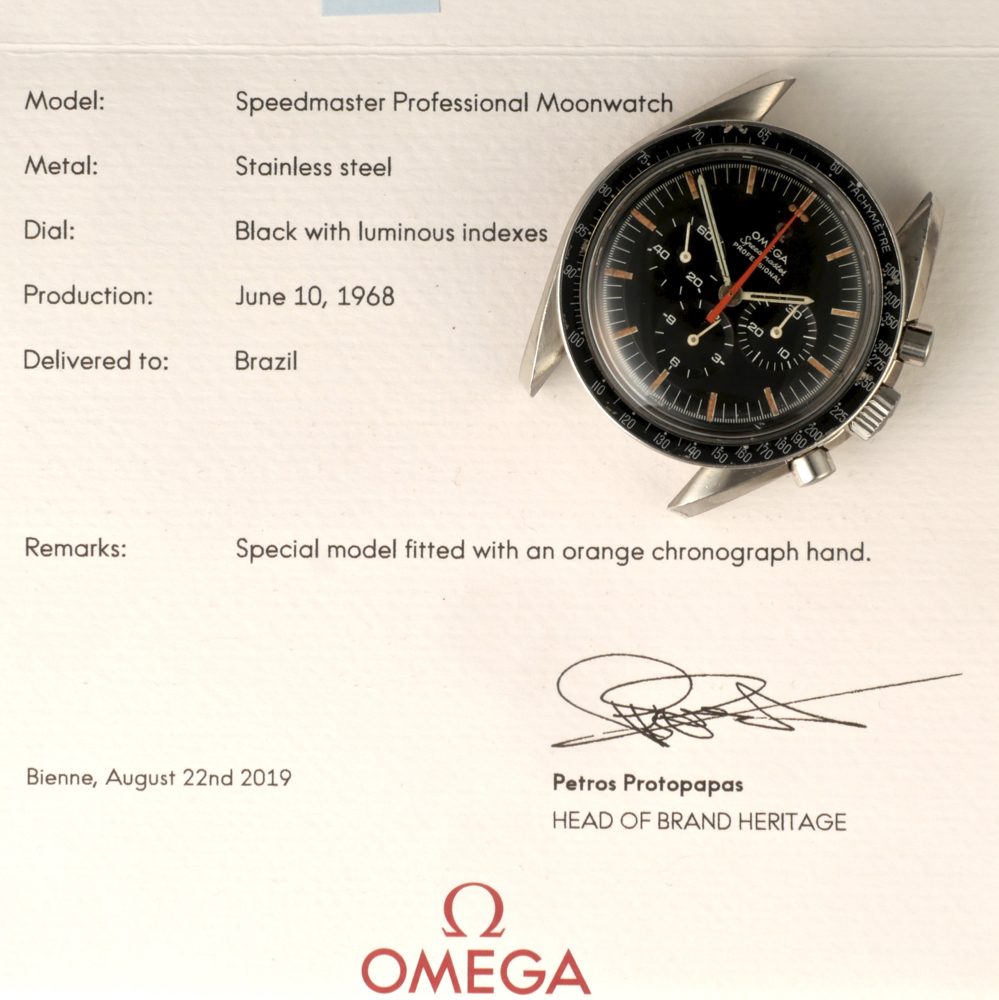
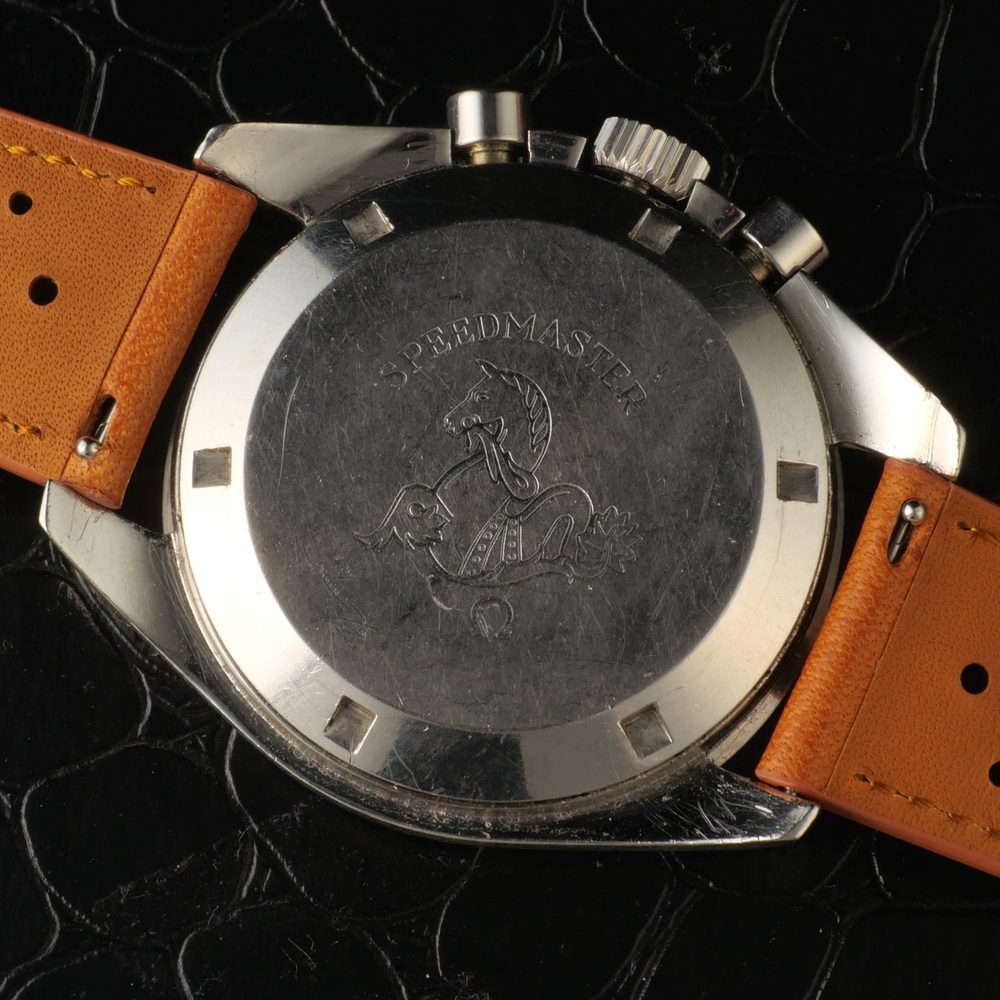
Omega Speedmaster Ultraman
Neil Armstrong and Buzz Aldrin become the first humans to walk on the moon.Omega Speedmaster Ultraman ref. 145.012-67
The Ultraman was manufactured only in 1968 and, has the reference 145.012-67. It is known that Speedmasters of this reference manufactured in 1968 were numbered in the serial range of 26.076.xxx to 26.079.xxx, with up to 3000 watches of this reference being manufactured in that year. But what is not known for certain is how many of these watches were manufactured with the Ultraman hand. It is estimated that fewer than 50 have been found to date and the only way to authenticate them is with the Extract from the Archives.
Interestingly, the nickname Ultraman came up when the watch appeared in the “Return of Ultraman” television series of 1971-72. This model was re-launched in 2018 and as a result, the prices for the original prices jumped; the last auction of an Ultraman reached USD 76.250,
The first Speedmaster was introduced as a sports and racing chronograph in 1957 and is pretty much the same Speedmaster as we know it today. The CK2915 also known as the Broad Arrow, is a holy grail watch.
The movement used was the calibre 321, introduced in 1942 as a joint project between Omega and Lemania, it was also used as a base movement by many Patek Philippe, Breguet, and Vacheron Constantin chronographs.
In 1959, a second Speedmaster version was released with alpha hands and a black aluminum bezel to improve readability. The case increased from 39mm. to 40mm. and an O-ring gasket was also added into the push buttons to improve water resistance.
The reference CK 2998 is the first Speedy that went to Space with Wally Schirra during the Mercury 8 flight in October 1962.
In 1962 Omega introduced the Speedmasters typical straight baton hands and next year the first 42mm asymmetrical case, adding protection to the chronograph pushers and crown, which is basically the same case in production today.
The Professional marking appeared below the Speedmaster logo in 1966 after being approved by NASA.
In 1968, Omega decided to replace the movement cal. 321 with a movement more accurate and cheaper to produce, the cal. 861, also produced by Lemania.
To celebrate the moon landing, the case back of the Speedmaster Professional changed in 1969. The engraved Hippocampus was removed and the phrases The first watch worn on the Moon and Flight qualified by NASA for all manned space missions were engraved. This was changed for the last time in 1971 to incorporate the Hippocampus on the back as well. This case back design is still being used today on the Speedmaster Professional.
Omega was founded in 1848 by Louis Brandt at the age of 23. The brands reputation grew fast and in 1895 the watches achieved a precision of 30 seconds a day.
By the turn of the 19th century, Omega was one of Switzerland’s largest watch companies with 240,000 watches produced annually and employing 800 people.
Omega made its debut in sports during the Gordon Bennett international ballooning Cup in 1917; since then Omega has gone on to be the official timekeeper at 21 Olympic Games.
In 1936 Omega set the remarkable World precision record of 97.8 points at the Kew-Teddington observatory in England.
The Omega Speedmaster was created in 1957 with motorsport in mind, the Speedy was the first wrist Chrono to feature its tachymeter scale on the bezel instead of the dial for increased legibility and in 65 was chosen by NASA as its official chronometer in Space, 4 years later, now the Moonwatch was the first watch to be worn on the Moon, when, on 21 July 1969, Neil Armstrong made his giant leap for mankind.
Currently, Omega belongs to the Swatch Group.
